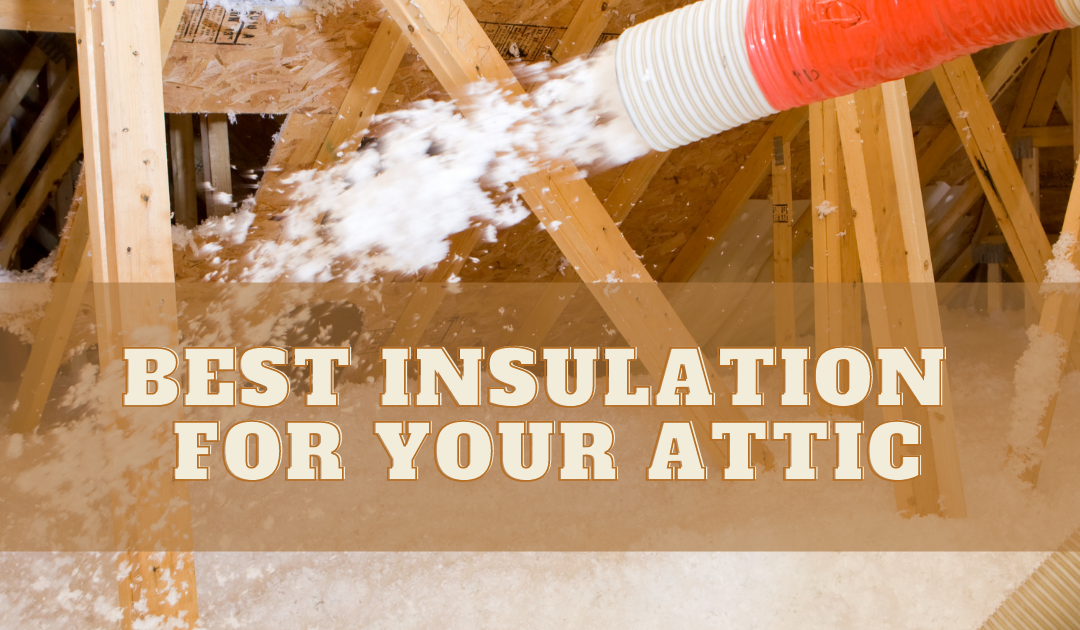The fluff between your walls, attic, and basement may not look like much. However, it’s an essential element to keeping your home safe and comfortable. Insulation is known as a “thermal envelope” that keeps your residence at a consistent temperature year-round.
Why should you care about the type of insulation that goes into your home? High-quality insulation installed correctly leads to lower energy usage, meaning more savings on your energy bill. In addition, proper barriers mean your family can stay at a comfortable temperature, outside noise pollution reduces, and your indoor air quality increases!
We recommend choosing a fibrous insulation material that is blown into the space. This way, the material fits perfectly into the designated surface with no gaps. In this method, your contractor will quite literally blow in the fibrous type of insulation with a large hose. The alternative is using a batts installation that requires the contractor to lay to down the packing. This method leads to the material having a harder time fitting into the space.
The two types of insulation for your attic that we recommend are Cellulose and Fiberglass. Today, we will be discussing their pros and cons as well as best practices for handling them.

Cellulose
Cellulose fibers are a wood-based substance, typically made out of recycled newspaper and other paper material. This type of insulation is known for being one of the more eco-friendly choices for your home. According to Elemental Green, ” If all the paper put into landfills each year were converted to cellulose insulation, it would save eight million tons of CO2 emissions, which is like taking every car off the road in both Nevada and New Mexico!”
Other reasons why cellulose is considered a green choice is because:
- The material is biodegradable
- Scarcely any pollution is generated during the manufacturing process
- Since this type of insulation is frequently accepted, it can be found at most locations. In return, it limits the transportation footprint.
Families who want to enhance their home’s indoor air quality gravitate towards cellulose since it’s a nontoxic soy-based product. Manufacturers can also treat this material with clean chemicals like mineral borate or ammonium sulfate that repel fire, mold, and six-legged insects! In addition, cellulose is one of the top choices for reducing outdoor noise pollution since the substance is so dense.
Cellulose is a loose insulation type and is almost always installed via the blown-in technique. You can check out one of our Before and After photos of installing cellulose insulation into a client’s attic.
Cellulose Key Takeaways:
- Wood-based, made out of recycled materials
- Eco-friendly and nontoxic option
- Treated with safe chemicals to be fire and pest resistant
- Preferred for outdoor noise reduction
Fiberglass
Fiberglass is another common choice when it comes to attic insulation. It is one of the most common types of fibrous materials in the US and is a relatively inexpensive option. This matter is made out of glass and sand or plastic that is finely broken down and woven together. It is naturally fire-resistant, so there is no need to treat it with a chemical retardant.
One issue people may have with fiberglass is that it can irritate the skin and eyes due to its glass-made material. If individuals in your family have skin sensitivity, this product may not be suitable for you. In addition, if you ever need to handle this material, it is essential to wear gloves and a mask when in close proximity.
Fiberglass can be installed in two ways: blown-in or rolled out (also known as batts). As previously mentioned, we almost always recommend blowing in your insulation. Fiberglass is a lot cleaner to install than cellulose. Cellulose is made of light paper, so when blown in, it tends to be less controllable.
Fiberglass Key Takeaways:
- An inexpensive and popular choice
- Relatively simple installation process
- Materials may cause irritation
- Naturally fire-resistant
Air Sealing
Homes can have the best insulation, but energy can still be lost if not paired with proper air sealing. Air sealing and insulation work hand-in-hand to bring households the ultimate comfort while lowering utility bills. According to EnergyStar.Gov, “Sealing air leaks around your home and adding insulation are two of the most cost-effective ways to improve energy efficiency and comfort in your home.” Without air sealing, outdoor air can enter while indoor air escapes through cracks and gaps in your house’s exterior.
When getting your home’s envelope sealed, your contractor will check windows, roof, doors, plumbing, and other areas! Though these holes may be small to the eye, they can cause big problems. The outdoor weather entering your home causes your heating and cooling system to work harder, leading to soaring utility bills.
When you couple these two upgrades together, air sealing acts like an external air barrier, while insulation acts as a thermal barrier. This improvement results in longer-lasting and better-performing heating and cooling systems, improved home efficiency, ultimate comfort, and lower bills. You can read more about this pairing on our Insulation & Air Sealing page.
When making these critical decisions for your home, the choices may start to seem overwhelming. It is important to remember that any insulation is better than no insulation! As we stated, blown-in cellulose and fiberglass are the two types of materials that we recommend depending on your home’s particular needs. While the choice is yours for those two, we will ALWAYS recommend air sealing to complement insulation.
When you participate in a Home Energy Audit, your contractor will let you know which type of material is best for your attic, where there are cracks in your home, and recommend other options to keep your home performing at its best. Which type of insulation do you currently use in your attic? Let us know on Instagram!





